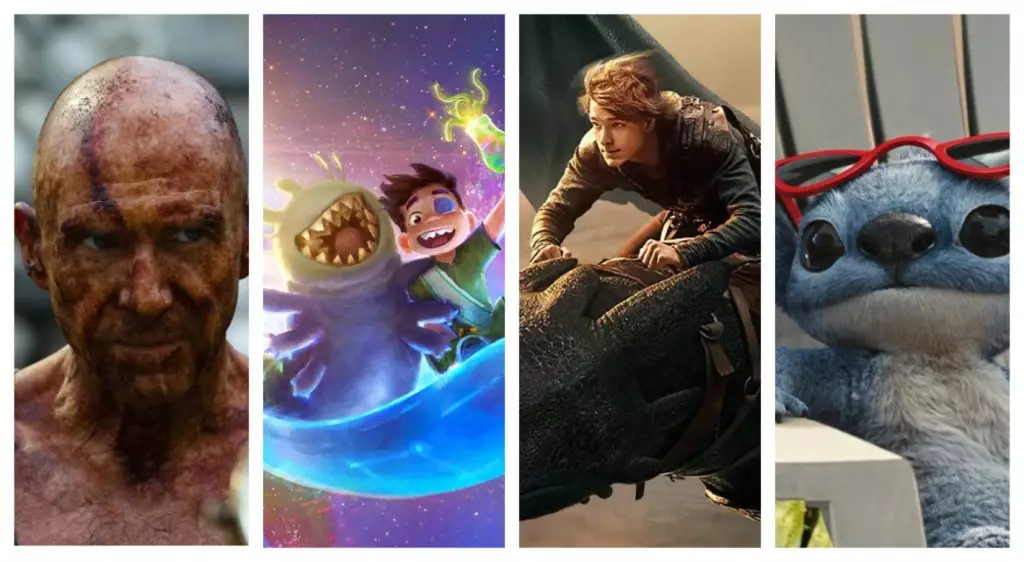Danny Boyle’s latest endeavor, “28 Years Later,” has marked a loud entrance into the horror film landscape with an impressive $60 million global debut. This figure reflects a balanced split between domestic and international markets, each contributing $30 million. This opening volley not only exceeds expectations but also sets a new standard for auteur-driven horror films, showcasing that the genre remains robust and commercially viable—something even die-hard critics of horror might begrudgingly acknowledge.
Horror films often seem to have a cyclical nature. Every few years, a standout title rejuvenates interest, and “28 Years Later” could very well be this year’s figurehead. Unlike its predecessors in the genre—most notably franchises like “A Quiet Place” and “Evil Dead”—this film has outperformed expectations within its opening metrics, bolstered by its mature and audacious R-rating. It’s a daring reminder that when done right, horror can not only captivate audiences but also encourage them to face their fears—and box office receipts.
Market Nuances and Audience Reception
The film stormed to the top in key international territories, debuting at No. 1 in the UK with a notable $6.4 million. It performed well in Mexico, earning $2.7 million on its opening weekend. Other markets also showed promise, such as the Middle East, Australia, Germany, and France, each chipping in significant returns.
What sets “28 Years Later” apart is not just its box office success but also the critical reception that seems to have created a buzz that garnered positive audience reactions even prior to its release. The notable marketing campaign prominently featuring its avant-garde director played a pivotal role in shaping audience expectations and enhancing pre-release enthusiasm. The filmmaker’s attachment adds a layer of credibility, encouraging filmgoers to take a chance on a genre typically dismissed by those who shy away from horror and its frights.
On the other hand, Disney’s “Elio,” released simultaneously, painted an entirely different picture. With a global earning of only $35 million, the animated feature seems to falter despite pre-release buzz and buoyant social media reactions. Targeting a younger audience while launching into a market still far removed from children’s holiday breaks may have seriously hindered its prospects.
The Power of Franchising
Studios live and die by their franchises, and “28 Years Later” seems well-positioned to leapfrog into a robust series if it maintains its momentum. The landscape of animated features is crowded, and Disney will need both creativity and strategic release timing to ensure “Elio” can gain traction, as evidenced by the successes of “Elemental” and “Encanto.” The latter two films built their own brand identities before building substantial franchises—an approach that “Elio” may not have been able to replicate from the get-go.
It’s important to highlight how the horror genre, particularly in the hands of a visionary like Boyle, could reshape the future direction of studios. If “28 Years Later” resonates with audiences in a way that sparks conversation, studios will likely double down on horror projects—perhaps even crafting an entirely new wave of intelligent horror films that marry compelling narratives with innovative filmmaking.
Competitive Market Dynamics
Looking at the bigger picture, the competitive landscape reveals that horror isn’t merely surviving; it’s thriving. Universal’s “How to Train Your Dragon” continues to dominate, but the breakaway success of “28 Years Later” allows the movie to carve its niche. It demonstrates a pressing distinction between generational titles versus the shimmering yet easily forgettable products of mainstream animation.
The box office must remain a reflection of broader cultural sentiments, and horror—more than any other genre—has an innate capability to encapsulate contemporary anxieties, often reflecting the societal fears of the time. The $60 million gross might not just signify monetary success but also a cultural phenomenon—a film that resonates with what many see as the current state of the world, even as audiences seek escapism.
With the ongoing debate among studios regarding the direction of content in theaters, it’s transparent that films like “28 Years Later” serve not just as entertainment but as a reflection of our evolving fears, hopes, and collective consciousness. This horror film’s emergence onto the scene provides ample food for thought about what lies ahead for both audiences and filmmakers.

